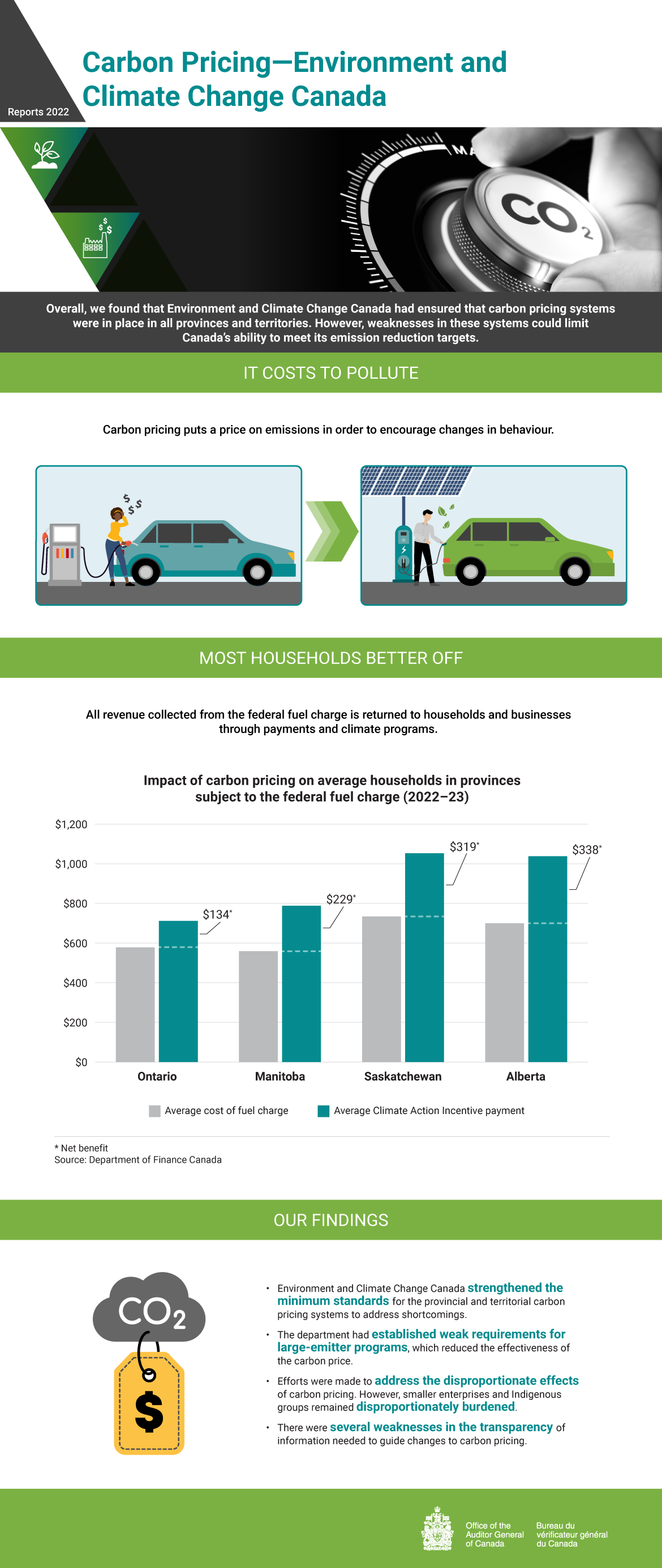Report 5—Carbon Pricing—Environment and Climate Change Canada—Infographic

Text version
This infographic presents findings from the 2022 audit report on carbon pricing.
Overall message
Overall, we found that Environment and Climate Change Canada had ensured that carbon pricing systems were in place in all provinces and territories. However, weaknesses in these systems could limit Canada’s ability to meet its emission reduction targets.
It costs to pollute
Carbon pricing puts a price on emissions in order to encourage changes in behaviour. An example of a change in behaviour is charging an electric vehicle at a solar-powered charging station instead of filling up a gas‑powered vehicle at the pump.
Most households better off
All revenue collected from the federal fuel charge is returned to households and businesses through payments and climate programs.
According to the Department of Finance Canada, the impact of carbon pricing on average households in provinces subject to the federal fuel charge was as follows in 2022–23, in ascending order of net benefit received:
- In Ontario, the average cost of fuel charge was $578 and the average Climate Action Incentive payment was $712. Therefore, the average Ontario household received a net benefit of $134.
- In Manitoba, the average cost of fuel charge was $559 and the average Climate Action Incentive payment was $788. Therefore, the average Manitoba household received a net benefit of $229.
- In Saskatchewan, the average cost of fuel charge was $734 and the average Climate Action Incentive payment was $1,053. Therefore, the average Saskatchewan household received a net benefit of $319.
- In Alberta, the average cost of fuel charge was $700 and the average Climate Action Incentive payment was $1,038. Therefore, the average Alberta household received a net benefit of $338.
Our findings
- Environment and Climate Change Canada strengthened the minimum standards for the provincial and territorial carbon pricing systems to address shortcomings.
- The department had established weak requirements for large-emitter programs, which reduced the effectiveness of the carbon price.
- Efforts were made to address the disproportionate effects of carbon pricing. However, smaller enterprises and Indigenous groups remained disproportionately burdened.
- There were also several weaknesses in the transparency of information needed to guide changes to carbon pricing.